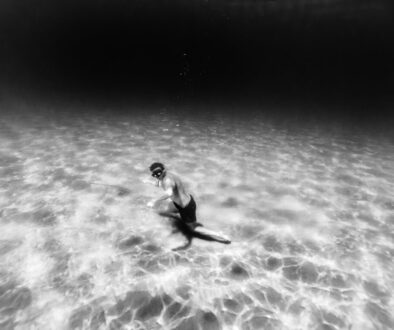Mystical Waters: Scuba Diving in the Cenotes of Yucatan
The Yucatan Peninsula in Mexico, with its sprawling jungles and ancient ruins, hides beneath its surface an otherworldly realm of cenotes—natural freshwater pools formed by the collapse of porous limestone bedrock. These cenotes are not only a source of natural beauty but also gateways to an underwater world filled with crystal-clear waters and breathtaking geological formations. This blog post invites you to explore the mystical waters of the Yucatan cenotes, offering a comprehensive guide to scuba diving in these unique environments.
The Allure of Cenote Diving
Cenote diving offers an experience unlike any typical ocean dive. The calm, clear waters provide unparalleled visibility, often exceeding 100 feet (30 meters), allowing divers to fully appreciate the intricate details of the cenotes’ underwater landscapes. These natural sinkholes have been sacred to the Maya people for thousands of years, often used for spiritual rituals and as gateways to the underworld, which adds a layer of mystique and history to the diving experience.
What is a Cenote?
Cenotes are natural pits or sinkholes resulting from the collapse of limestone bedrock that exposes groundwater underneath. The Yucatan Peninsula is home to over 6,000 cenotes, each with its unique characteristics. Some are open like a lake, others are almost completely enclosed with only small openings at the top, and many are connected by extensive underground river systems.
Preparing for Your Dive
Scuba diving in cenotes requires specialized training and equipment. While basic scuba certifications are necessary, divers also benefit from having a cavern or cave diving certification due to the overhead environments often encountered in cenotes.
Essential Equipment:
- Lights: Good quality dive lights are crucial as many cenotes have dark areas.
- Wetsuit: Water temperatures in cenotes are cooler, typically around 75°F (24°C), so a thicker wetsuit (5mm) is advisable.
- Fins: Shorter fins are preferable for maneuverability in tight spaces.
- Buoyancy Control Device (BCD): Good buoyancy control is essential to avoid disturbing the delicate sediment of the cenote floor.
Top Cenotes for Scuba Diving
Each cenote offers a unique diving experience, but some stand out for their beauty and diving conditions:
- Cenote Dos Ojos: Known for its two circular sinkholes and a long passageway between them, Dos Ojos is perfect for beginners and offers stunning views of rock formations and light effects.
- Cenote Angelita: Famous for its surreal underwater river, caused by a layer of hydrogen sulfate separating the freshwater from the saltwater below.
- Gran Cenote: Ideal for those new to cenote diving, featuring crystal-clear waters and abundant marine life.
- Cenote Carwash: Named for its past use as a car wash, now known for its open waters and lush aquatic vegetation.
- Cenote El Pit: A deeper cenote that offers an advanced dive into a stunning hydrogen sulfide cloud at around 100 feet (30 meters).
Safety Considerations
Safety is paramount when diving in cenotes due to their enclosed nature and potential for silt out, which can drastically reduce visibility if the bottom is disturbed:
- Never dive alone: Always dive with a buddy and ideally with a guide who knows the cenote well.
- Maintain Buoyancy: Good buoyancy control is critical to prevent kicking up silt.
- Follow Guidelines: Adhere to the path and guidelines set out by the guide, especially in more complex cavern systems.
Ethical Diving Practices
Preserving the pristine condition of cenotes is a responsibility for all divers. This involves:
- No Touching: Avoid touching the walls or bottom of the cenote as they can be damaged easily.
- Carry Out Trash: Ensure that no garbage is left behind. Even biodegradable materials should be removed.
- Respect the Environment: Recognize the cultural and spiritual significance of cenotes for the local Maya communities.
The Mystical Experience
Diving in a cenote can be a transformative experience. The interplay of light and shadow, the silence of the underwater world, and the historical and spiritual significance of these sites create a profound connection to nature and history. For many, it feels like entering another realm—a place where time stands still and modern-day worries fade away.
The Larger Impact of Cenote Diving
Beyond the thrill and awe, cenote diving also plays a crucial role in the local economy. It supports local businesses and provides income for many families. Furthermore, divers’ fees contribute to the conservation of these natural wonders. By participating in guided tours, divers help fund the preservation efforts and ensure that cenotes will remain for future generations to explore.
Conclusion
Scuba diving in the cenotes of Yucatan offers more than just


